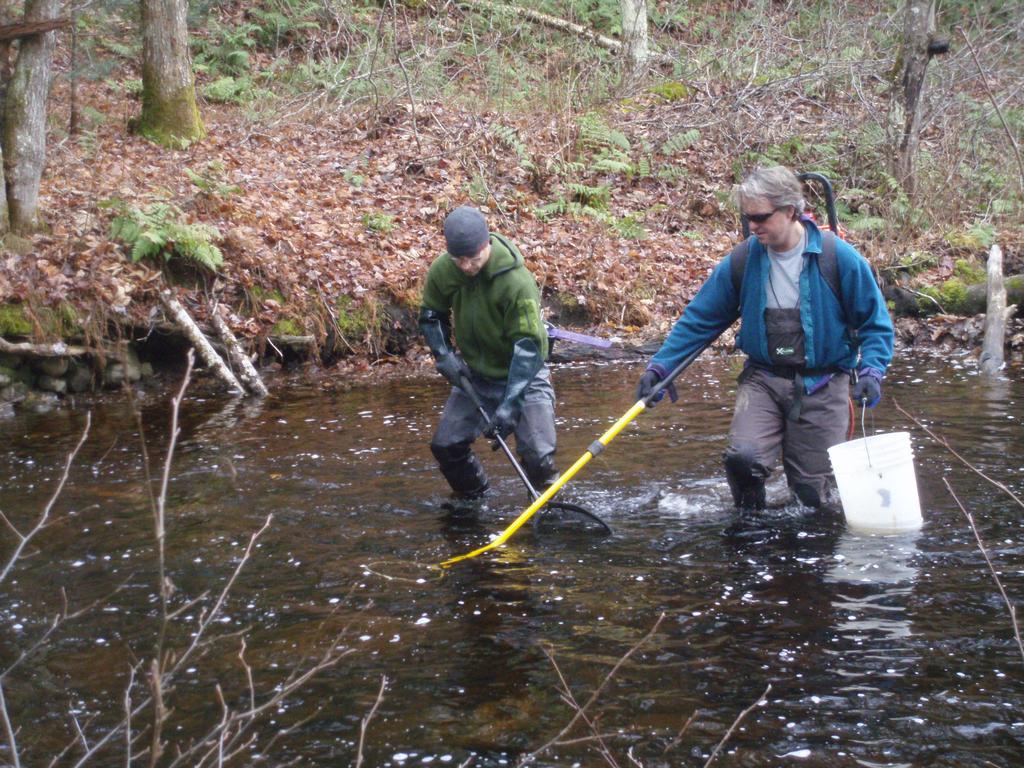Lake capacity studies are often requested prior to approval of new development on lakes that have Lake Trout populations that are considered at or near capacity for development. These studies are based on oxygen and phosphorus concentrations.
Generally speaking, Lake Trout thrive in lakes with low phosphorus concentrations and high oxygen concentrations which allows them to survive in deep water through the summer months until lake turnover in the fall. If the phosphorus concentrations increase in a lake, it promotes plant and algae growth. When the plant and algae die and sink to the bottom, the resulting increase in decomposition consumes more of the available oxygen, which does not replenish until the fall lake turnover.
Development has been shown to drive phosphorus concentrations higher on a lake, which is why lake capacity studies are requested to determine if development or additional development should be permitted and/or will pose a threat to Lake Trout populations.

People often associate increased phosphorus levels with things like detergent getting into the waterways through improperly constructed leaching beds. While this is a contributing factor, it is not the only cause. Land use change–for example, clearing the vegetation near a lake and replacing it with hardened surfaces like asphalt driveways and patios, also contributes to increasing phosphorus concentrations.
Think of it like this: when it rains, the trees and plants will absorb rainwater as it infiltrates into the soil, which will prevent some of the phosphorus in the rainwater from getting into the lake. As phosphorus in the water is infiltrated into the soil, both the soil and vegetation help to remove the phosphorus in natural chemical processes. When natural buffers are replaced with hardened surfaces, there is no such process occurring; the rainwater simply runs into the lake.

Not necessarily. Not every lake has a Lake Trout population; however, the District of Muskoka requires water quality impact assessments on lakes that have been documented as sensitive, either because of past readings of elevated phosphorus or because of indicators such as algae blooms. When development or severance is proposed on a vacant lot on a lake considered at capacity, it is likely that a water quality impact assessment will be required. Many times, if the development is moving forward, the municipality will ask us to provide guidance on how best to develop the particular lot to avoid loading additional phosphorus into the water body and recommended mitigation options will be included in the report.
A boating capacity study is typically required for large-scale development proposals such as marinas, hotels, condominiums, and commercial development. A proposal for a single cottage or house would not trigger a request for a recreation or boating capacity study.
Where a proposed development would cause a large increase in the amount of boat traffic in a given area, we may be hired to do a study that considers the current amount of boating traffic. We conduct the study by observing the boat traffic over several days, including some weekends, weekdays, and holidays, looking at the number and type of boat that is being utilized. By calculating the lake space that each type of watercraft requires (for instance, a speedboat pulling a water-skier will require considerably more lake space than a kayak), we determine the available capacity for increased traffic on the lake.


Not necessarily. As with other factors, there are mitigation measures that can be implemented. However, in a lake that is already over capacity, the number and viability of such measures is limited.